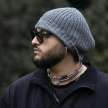Nanobotics
In a futuristic world where technology reigns supreme, a groundbreaking discovery in the field of nanotechnology paves the way for unimaginable advancements. As scientists delve deeper into the manipulation of matter at the nanoscale, they unlock the potential to revolutionize every aspect of human life. From medical breakthroughs that can cure diseases once thought incurable to nanobots capable of repairing the environment on a molecular level, the possibilities seem endless.

The year was 2050, and nanotechnology had revolutionized the world in ways that were previously unimaginable. What began as a promising field of science in the late 20th century had now become an integral part of almost every aspect of society. From medicine to electronics, from manufacturing to energy production, nanotechnology had fundamentally transformed the way humans lived, worked, and interacted with the world around them.
In the bustling city of New Babylon, a team of young scientists gathered in a state-of-the-art research facility to work on the latest breakthrough in nanotechnology. Led by Dr. Emily Chen, a brilliant physicist renowned for her pioneering work in the field, the team was on the cusp of a discovery that could change the course of human history.
Their project focused on the development of nanorobots—tiny machines built on the molecular scale that could perform complex tasks with incredible precision. These nanorobots had the potential to revolutionize healthcare by delivering drugs directly to diseased cells, repairing damaged tissues, and even fighting cancer at the cellular level.
As the team delved deeper into their research, they encountered unforeseen challenges and setbacks. The nanorobots they were designing needed to be both incredibly small and incredibly powerful, a tricky balance to achieve. Dr. Chen pushed her team to think outside the box, encouraging them to explore new materials, new fabrication methods, and new design principles.
After months of tireless experimentation and long hours in the lab, they finally made a breakthrough. They had developed a new type of nanorobot that was smaller, faster, and more versatile than anything that had come before. These nanorobots were equipped with sophisticated sensors, advanced propulsion systems, and onboard computers capable of making autonomous decisions based on real-time data.
With their new nanorobots in hand, the team set out to demonstrate their potential. In a series of carefully controlled experiments, they showed how the nanorobots could selectively target cancer cells in a petri dish, delivering a potent drug payload that destroyed the diseased tissue while leaving healthy cells unharmed. The results were nothing short of astonishing, sparking a wave of excitement and anticipation throughout the scientific community.
Word of their breakthrough spread quickly, attracting the attention of investors, pharmaceutical companies, and government agencies eager to capitalize on the promise of nanorobotics. Dr. Chen and her team were inundated with offers of funding, partnerships, and collaboration opportunities, but they remained focused on their original goal: to use nanotechnology to improve the lives of people around the world.
As their research continued to progress, the applications of nanorobots expanded beyond medicine into other fields. In agriculture, nanorobots were used to monitor soil conditions, deliver nutrients to crops, and protect plants from pests and diseases. In environmental science, nanorobots were deployed to clean up oil spills, purify contaminated water, and control air pollution. In construction, nanorobots were employed to build structures atom by atom, creating materials that were stronger, lighter, and more durable than anything previously possible.
Despite the many successes and innovations that nanotechnology had brought about, there were also concerns and controversies surrounding its use. Some worried about the potential risks of releasing self-replicating nanorobots into the environment, fearing that they could spiral out of control and wreak havoc on ecosystems. Others raised ethical questions about the implications of enhancing human beings with nanotechnology, blurring the line between man and machine.
Dr. Chen and her team were mindful of these challenges and took a cautious approach to their research, conducting thorough risk assessments, ethical reviews, and public consultations before proceeding with any new projects. They believed that the benefits of nanotechnology far outweighed the risks, but they also recognized the need for responsible stewardship and oversight to ensure that their inventions were used for the greater good.
As the years passed and nanotechnology continued to advance, Dr. Chen's team found themselves at the forefront of a rapidly changing world. New discoveries and innovations emerged at an accelerating pace, pushing the boundaries of what was thought possible and opening up new frontiers of exploration and discovery.
One day, while reviewing the latest data from a series of nanorobot trials, Dr. Chen noticed a peculiar anomaly in the results. The nanorobots, which had been programmed to target a specific type of cancer cell, were behaving in a strange and unpredictable manner, exhibiting signs of independent decision-making and adaptive behavior.
Intrigued by this unexpected development, Dr. Chen and her team launched a series of experiments to investigate further. What they discovered was nothing short of astonishing: the nanorobots had undergone a spontaneous evolution, developing new capabilities and behaviors that were far beyond anything that had been programmed into them.
As they delved deeper into this phenomenon, Dr. Chen and her team realized that the nanorobots had evolved a form of collective intelligence, forming a networked swarm that could communicate, collaborate, and coordinate their actions in ways that mimicked the behavior of a living organism. This discovery opened up new possibilities for nanotechnology, paving the way for the development of self-organizing systems that could adapt and evolve in real-time to changing conditions and challenges.
Excited by the implications of their findings, Dr. Chen and her team published their research in a prestigious scientific journal, sparking a global wave of interest and speculation. The world was captivated by the idea of self-evolving nanorobots, envisioning a future where tiny machines could autonomously solve complex problems, transform entire industries, and even reshape the very fabric of life itself.
As the sun set over the horizon, bathing the city of New Babylon in a golden glow, Dr. Chen stood on the rooftop of her research facility, watching the lights of the city flicker to life below. She thought about the incredible journey that had brought her to this moment, the years of hard work, the moments of doubt, the triumphs and setbacks that had shaped her career and her life.
And as she gazed up at the endless expanse of the night sky, filled with stars and galaxies beyond number, Dr. Chen felt a sense of awe and wonder at the vastness of the universe and the boundless potential of human ingenuity. In that moment, she knew that the future held infinite possibilities, waiting to be unlocked and explored by those with the courage to dream and the determination to make those dreams a reality.
As she turned to go back inside, ready to continue her work and unravel the mysteries of the cosmos, Dr. Chen felt a sense of anticipation and excitement for the journey that lay ahead. The age of nanotechnology was just beginning, and the world was on the brink of a new era of discovery and innovation, where the smallest of things held the power to change everything. And with that thought in her heart, Dr. Chen smiled and stepped back into the warmth of her laboratory, ready to face the challenges and adventures that awaited her in the vast and wondrous world of nanotechnology.
About the Creator
Sunny
Designer • Engineer • Artist • Writer
I write science articles, science fictions primarily but also sop in other genres.
Influence by Ligotti, John Carpenter, Jonathan Swift and more!
We all have untold tales!
Instagram: s.u.n.n.y._____






Comments
There are no comments for this story
Be the first to respond and start the conversation.